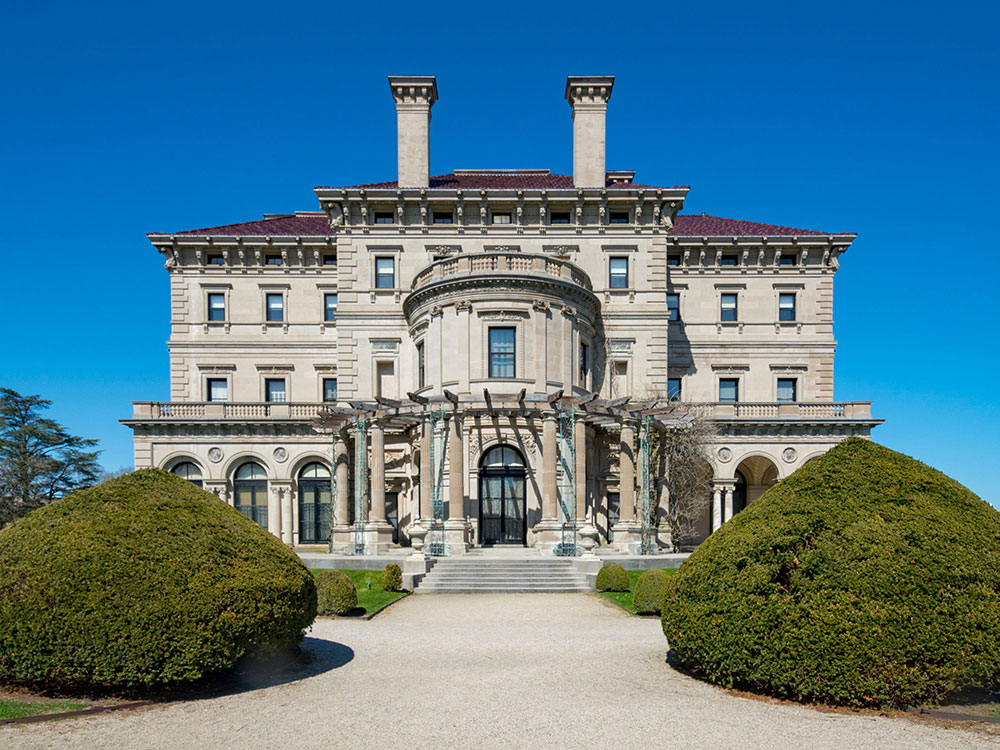Smallest U.S. state by area, but is also the second-most densely populated
Places to See in Rhode Island

Luke Campbell, CC BY-SA 3.0, via Wikimedia Commons; Image Size Adjusted
Landmarks and Landscapes
Beavertail Lighthouse · Crescent Park Looff Carousel · Narragansett Town Beach · The Towers (Narragansett, RI)

xiquinhosilva, CC BY 2.0, via Wikimedia Commons; Image Size Adjusted
Newport, RI
Seaside city on Aquidneck Island in Rhode Island known as a New England summer resort and is famous for its historic mansions and its rich sailing history

Macaolards, CC BY-SA 4.0, via Wikimedia Commons; Image Size Adjusted
Providence, RI
Capital and most populous city in Rhode Island and one of the oldest cities in the United States
Rhode Island is in the New England region of the United States and is the smallest U.S. state by area and the seventh-least populous, but it is also the second-most densely populated behind New Jersey. The state takes its name from the island of the same name; however, most of the state is on the mainland. Providence is the state capital and most populous city in Rhode Island.
On May 4, 1776, the Colony of Rhode Island and Providence Plantations was the first of the Thirteen Colonies to renounce its allegiance to the British Crown, and it was the fourth state to ratify the Articles of Confederation, doing so on February 9, 1778. The state boycotted the 1787 convention, which drew up the United States Constitution and initially refused to ratify it. It was thus the last of the original 13 states to do so, on May 29, 1790.
Formerly named the State of Rhode Island and Providence Plantations since the colonial era, voters in the state approved an amendment in November 2020 to the state constitution, formally renaming itself the State of Rhode Island. Rhode Island's official nickname is the "Ocean State", a reference to the large bays and inlets that amount to about 14% of its total area.
Despite its name, most of Rhode Island is on the mainland of the United States. Prior to 2020, the state's official name was State of Rhode Island and Providence Plantations, which is derived from the merger of four Colonial settlements. The settlements of Rhode Island (Newport and Portsmouth) were situated on what is commonly called Aquidneck Island today but was called Rhode Island in Colonial times. Providence Plantation was the name of the colony founded by Roger Williams in the state's capital of Providence. This was adjoined by the settlement of Warwick; hence the plural Providence Plantations.
The 50 years following the Civil War were a time of prosperity and affluence. Rhode Island was a center of the Gilded Age and provided a home or summer home to many of the country's most prominent industrialists. This was a time of growth in textile mills and manufacturing and brought an influx of immigrants to fill those jobs, bringing population growth and urbanization. In Newport, New York's wealthiest industrialists created a summer haven to socialize and build grand mansions. Thousands of French-Canadian, Italian, Irish, and Portuguese immigrants arrived to fill jobs in the textile and manufacturing mills in Providence, Pawtucket, Central Falls, and Woonsocket.
Rhode Island is nicknamed the Ocean State and has a number of oceanfront beaches. It is mostly flat with no real mountains, and the state's highest natural point is Jerimoth Hill, 812 feet (247 m) above sea level. The state has two distinct natural regions. Eastern Rhode Island contains the lowlands of the Narragansett Bay, while Western Rhode Island forms part of the New England upland. Rhode Island's forests are part of the Northeastern coastal forests ecoregion.
Narragansett Bay is a major feature of the state's topography. There are more than 30 islands within the bay; the largest is Aquidneck Island, which holds the municipalities of Newport, Middletown, and Portsmouth. The second-largest island is Conanicut, and the third is Prudence. Block Island lies about 12 miles (19 km) off the southern coast of the mainland and separates Block Island Sound and the Atlantic Ocean proper.
The state capitol building is made of white Georgian marble. On top is the world's fourth largest self-supported marble dome. It houses the Rhode Island Charter granted by King Charles II in 1663, the Brown University charter, and other state treasures.
The First Baptist Church of Providence is the oldest Baptist church in the Americas, founded by Roger Williams in 1638.
The first fully automated post office in the country is in Providence. There are many historic mansions in the seaside city of Newport, including The Breakers, Marble House, and Belcourt Castle. Also there is the Touro Synagogue, dedicated on December 2, 1763, considered to be the first synagogue within the United States, and still serving. The synagogue showcases the religious freedoms established by Roger Williams, as well as impressive architecture in a mix of the classic colonial and Sephardic style. The Newport Casino is a National Historic Landmark building complex that houses the International Tennis Hall of Fame and features an active grass-court tennis club.
Scenic Route 1A (known locally as Ocean Road) is in Narragansett. "The Towers" is also in Narragansett featuring a large stone arch. It was once the entrance to a famous Narragansett casino that burned down in 1900. The Towers now serve as an event venue and host the local Chamber of Commerce, which operates a tourist information center.
This article uses material from the Wikipedia article "Rhode Island" which is released under the Creative Commons Attribution-Share-Alike License 3.0